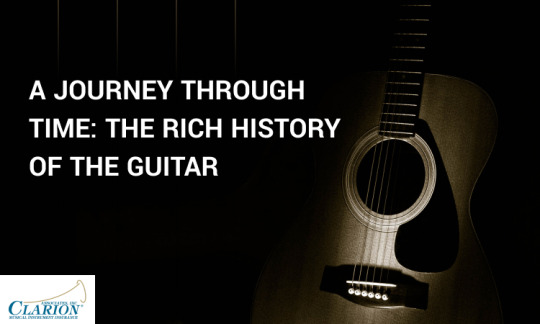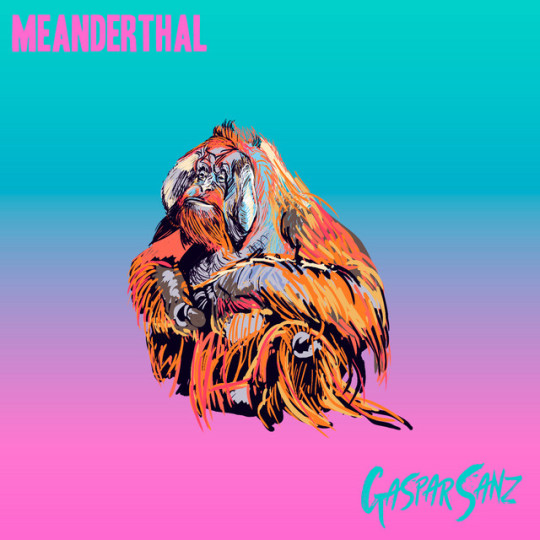#Gaspar Sanz
Explore tagged Tumblr posts
Text
Mi crítica del concierto de Aníbal Soriano esta noche en el Espacio Turina.
0 notes
Text
Sejarah Gitar: Dari Alat Musik Tradisional hingga Ikon Modern

Gitar adalah salah satu alat musik paling populer dan berpengaruh di dunia, digunakan dalam berbagai genre musik, mulai dari klasik hingga rock. Sejarah gitar mencerminkan perkembangan budaya dan teknologi musik dari masa ke masa. Berikut adalah tinjauan mengenai evolusi gitar dari awal hingga saat ini.
Asal Usul Gitar
Asal usul gitar dapat ditelusuri kembali ke alat musik kuno yang ada ribuan tahun yang lalu. Salah satu nenek moyang gitar adalah alat musik yang dikenal sebagai oud, yang berasal dari Timur Tengah dan digunakan sejak abad ke-9. Oud adalah instrumen bertubuh bulat dengan leher panjang dan tidak memiliki senar fretted.
Di Eropa, alat musik serupa muncul, seperti lute dan vihuela. Lute, yang populer di abad pertengahan dan Renaissance, memiliki bentuk yang lebih besar dan dimainkan dengan cara dipetik. Vihuela, yang muncul di Spanyol pada abad ke-15, memiliki bentuk yang mirip dengan gitar modern, tetapi dengan lebih banyak senar.
Gitar Barok
Pada abad ke-17, gitar barok mulai dikenal di Eropa. Gitar ini memiliki lima pasang senar (setara dengan 10 senar) dan sering digunakan dalam musik klasik. Perkembangan desain dan teknik bermain gitar mulai muncul, berkat komposer dan pemain gitar terkenal seperti Gaspar Sanz.
Gitar Klasik
Memasuki abad ke-19, gitar klasik modern mulai terbentuk. Gitar ini memiliki enam senar dan desain yang lebih besar, dengan bentuk yang lebih ergonomis. Antonio de Torres, seorang pembuat gitar Spanyol, memainkan peran penting dalam evolusi gitar ini. Torres menciptakan beberapa inovasi dalam konstruksi gitar, termasuk bentuk bodi yang lebih besar dan teknik pembuatannya, yang meningkatkan resonansi dan kualitas suara.
Gitar Elektrik
Revolusi besar dalam sejarah gitar terjadi pada awal abad ke-20 dengan penemuan gitar listrik. Gitar listrik pertama kali diperkenalkan pada tahun 1930-an, memungkinkan musik rock dan jazz untuk berkembang dengan suara yang lebih keras dan lebih jelas. Gibson Les Paul dan Fender Stratocaster menjadi ikon dalam dunia gitar listrik, dan masih sangat dihormati hingga saat ini.
Gitar dalam Musik Populer
Sejak pertengahan abad ke-20, gitar telah menjadi pusat dari banyak genre musik. Dalam musik rock, gitar digunakan baik sebagai alat solo maupun sebagai instrumen pengiring. Musisi seperti Jimi Hendrix, Eric Clapton, dan Jimmy Page mengubah cara gitar dimainkan dan dipandang dalam budaya populer.
Gitar juga menemukan tempat di genre lain, seperti country, blues, dan jazz, berkontribusi pada berbagai gaya permainan dan teknik. Teknik fingerstyle, slide guitar, dan improvisasi menjadi bagian penting dari bahasa musik gitar.
Gitar Kontemporer
Saat ini, gitar tetap menjadi salah satu alat musik yang paling banyak digunakan di seluruh dunia. Inovasi dalam teknologi, seperti efek digital dan perangkat lunak musik, telah memperluas kemungkinan bagi para pemain gitar. Gitar akustik dan listrik terus beradaptasi dengan perubahan tren musik, dengan berbagai bentuk dan ukuran yang memenuhi kebutuhan musisi modern.
Kesimpulan
Sejarah gitar adalah perjalanan panjang yang mencerminkan perkembangan musik dan budaya. Dari alat musik tradisional hingga menjadi simbol dalam berbagai genre, gitar terus berinovasi dan mempengaruhi dunia musik. Dengan kemampuannya untuk beradaptasi dan berkembang, gitar tetap menjadi alat musik yang penting dan dicintai di seluruh dunia.
0 notes
Text
The guitar diaries
14 weeks before my exam.
My teacher and I are shifting focus this week to the pieces. We’re still working on technical things though like getting scales up to speed I’m having trouble with the shifts in the 3 octave scales and the sixteenth note tremolando scales but they will get up to speed with some extra work.
But the technical aspect is only 40% of my grade while the pieces are 60%. My 2 studies for example are only with 5 points each. So although their important were shifting our focus to pieces until a technical check up at the end of the month.
My felt my lesson went really well and I’m hoping for good outcomes. Now I have to memorize, get things nice and legato and have everything in rhythm.
0 notes
Text
A Journey Through Time: The Rich History of the Guitar
Imagine a music world without the warm tones of the guitar! Unimaginable. Right? Its seemingly endless versatility captivates audiences across genres and continents. Believe it or not, this beloved instrument has a long and winding journey behind it - a story filled with fascinating twists and turns. Through this blog, we will delve into the rich history of the guitar, and trace its evolution from ancient antecedents to the modern six-string wonder we know today. So, let the musical game begin!
Early Ancestral Instruments (3,500 BC - 13th Century AD)
The guitar's story is kind of like a family mystery! It all started around 3,500 years ago in places like Mesopotamia and Egypt. Back then, some instruments looked a bit like guitars, with frets and picks. These early instruments paved the way for what came next. Around 1500 BC, an instrument - by the name of the oud, appeared in Mesopotamia and Persia. It was a pear-shaped thing that had strings. The oud's influence traveled far and wide, eventually reaching Europe with the Moors in the 8th century AD. The Moors brought the oud to Spain, where it is believed to be a big reason why this musical device eventually came to be. Another instrument in the family tree is the European lute. This one was bigger and more complicated, popular with fancy people in the Middle Ages because of its nice sound. Lutes typically had four or more strings that came in pairs and were played with a pick, just like some features of the guitar.
The Birthplace: Medieval Spain (13th - 16th Century AD)
The guitar's family tree gets a little fuzzy in Spain, but most folks agree it's where the modern one we know was born. Back in the 1300s and 1400s, instruments called vihuelas showed up in Spain. These vihuelas looked somewhat like them. They had a curvy body like a lute's but thinner in the middle. During the 1500s, the vihuela went through a big change. It went from four sets of strings down to five, and its body shrunk a bit. This makeover led to the "guitarra española," which means "Spanish guitar" and is the direct grandma (or grandpa) of the modern classical version we have today.

The Rise of the Spanish Variant (16th - 18th Century AD)
The Spanish version became a real star across Europe in the 1500s and 1600s. Super-skilled guitarists started showing up, writing and performing difficult pieces that showed off how much more the instrument could now do. Guys like Luis Milan and Gaspar Sanz wrote tons of cool music just for solo instruments, laying the groundwork for how classical guitarists play today. Things kept changing in the 1700s and 1800s, a period called the Baroque period. Guitars with five sets of strings slowly got swapped out for the ones with six strings, which allowed for more variety in the music.
Diverging Paths: The Classical and Steel-String (19th Century AD - Present)
In the 1800s, the family started to grow in different directions. In Europe, the classical one kept getting more delicate, with players focusing on fancy fingerpicking and a smooth, mellow sound. Spanish variant makers kept tinkering with the design, eventually ending up with the modern classical thing we have today. No wonder it is a cherished piece of gear and needs the safety net of a comprehensive guitar insurance plan.
The 20th Century and Beyond: The Electric Revolution and the Global Embrace
The 1900s brought a game-changer to the world of music - the electric guitar! Invented in the early 1920s, this string was different because it had special parts called pickups. These pickups could change the tiny vibrations of the strings into electrical signals. This meant the sound could be made much louder (amplified) and even distorted, creating all kinds of new sounds. The electric one became the foundation of new music styles like rock and roll, rock, and heavy metal.
Now that you are fairly aware of the history of this string instrument, make sure to cover it with a dedicated guitar insurance policy right away, regardless of the version you own!
#guitar#newyork#musicians#insurance#guitar insurance#musical instruments#music insurance company#insurance coverage
0 notes
Text
0 notes
Video
youtube
Van Isabel een prima opname gemaakt tijdens gitaarles in Arnhem. Zij speelt van de Spaanse barokgitarist en componist Gaspar Sanz 2 Spaanse barokgitaar solo's: Rujero (in 4/4 maat) en Paradetas(in 3/4 maat). Zijn belangrijkste werk bestaat uit drie bundels met pedagogische composities voor barokgitaar, geschreven in tabulatuur. Deze 2 stukken(dansen) komen uit "Libro segundo, de cifras sobre la guitarra española" uit 1675. Alle werken werden toentertijd in tablatuur uitgegeven. Mooi gespeeld!
0 notes
Text
Veja "Gaspar Sanz, Folías, Españoleta y Canarios, guitarra barroca." no YouTube
youtube
5 notes
·
View notes
Text
youtube
Beautiful guitar music - Gaspar Sanz: Canarios
5 notes
·
View notes
Text
Mi crítica del concierto de Rami Alqhai y Javier Núñez anoche en el Alcázar.
#rami alqhai#javier núñez#diego ortiz#gaspar sanz#antonio de cabezón#antonio martín y coll#salamone rossi#alonso mudarra#andrea falconieri#bernardo storace#música#music
0 notes
Video
youtube
Andreas Nachtsheim (Baroque Guitar) and Klaus Mader (Colascione) play "Zarabanda" by Gaspar Sanz (1640-1710) - both Instruments built by Karl Kirchmeyr (Vienna)
29 notes
·
View notes
Video
youtube
Mobiler Musikunterricht - Rujero von Gaspar Sanz
Gaspar Sanz veröffentlichte 1674 das erste bedeutende Lehrwerk für die Barockgitarre: „Instrucción de música sobre la guitarra española y métodos de sus primeros rudimentos hasta tañer con destreza“. LEARN MORE: https://www.facebook.com/MobilerMusikunterrichtRegensburg
#youtube#Mobiler Musikunterricht Regensburg#Helmar Weiss#Helmar Weiß#Gitarre#Guitar#Rujero#Gaspar Sanz#Instrucción de música sobre la guitarra española y métodos de sus primeros rudimentos hasta tañer con destreza
1 note
·
View note
Text
Listen: "You Can Be Somebody To Love" by Gaspar Sanz
Listen: “You Can Be Somebody To Love” by Gaspar Sanz
https://open.spotify.com/track/7F6sjuUWql4SLvKH8JZ5Ez?si=dc05d2cec89e4663 “You Can Be Somebody To Love” by Gaspar Sanz The Australian indie pop band Gaspar Sanz come to Wolf in a Suit once more with the hypnotizing and charming sonic gem that is “You Can Be Somebody To Love”. The track is playfully inviting and captivating as it comes together in a way that feels refreshing from the start and…

View On WordPress
0 notes
Photo

Listen #free in #Spotify: "Wife" by Gaspar Sanz https://ift.tt/2sbmdmI
0 notes
Video
youtube
(via https://www.youtube.com/watch?v=OoFj8ujEx9E)
1 note
·
View note
Text



The Raeda dance chapter isn't ready yet, but I did do a few drawings that show what the dance will look like. There will be a few more drawings of the dance eventually. There are so many words needed to describe these 3 simple pictures. 😅
If you want a preview of what I have based their dance on, here is a link to the youtube video of the song Canarios by Gaspar Sanz showing two people dancing. I thought this couple's dance was really cute with their toying and teasing and hopping around: https://www.youtube.com/watch?v=jh-94sxuduI&list=PLtMhS486sD8hkhzp3cjUao3FmdwSFPju8&index=2
And then I plan on having them transition to doing a medieval couple's dance known as the Saltarello. I love that they are holding hands and spinning around: https://www.youtube.com/watch?v=PWMyb1UtlzE&list=PLtMhS486sD8hkhzp3cjUao3FmdwSFPju8&index=1
69 notes
·
View notes
Text
youtube
Wonderful guitar music: Canarios by Gaspar Sanz
1 note
·
View note